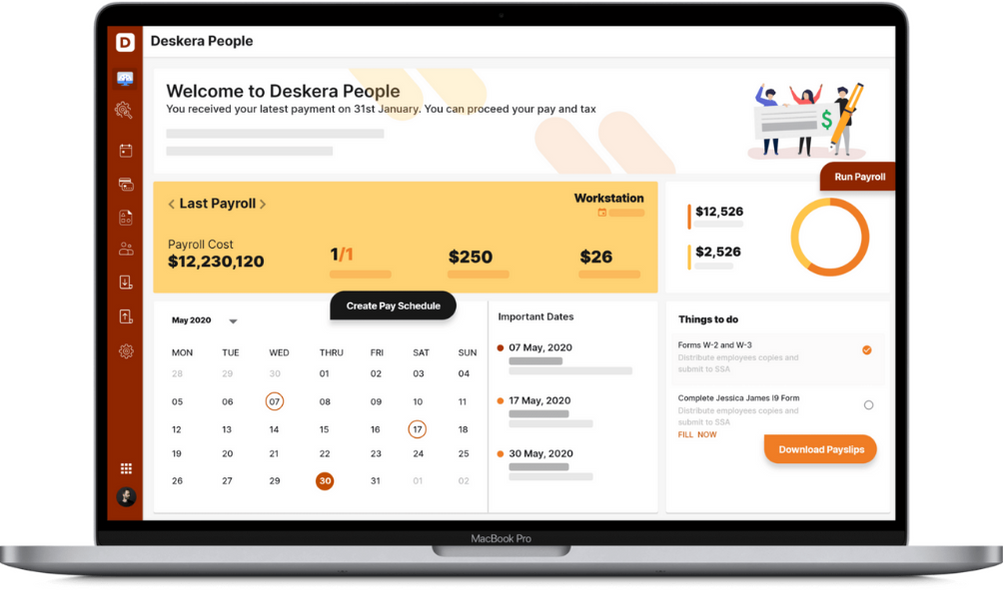You could be a sole proprietor, a partner in a firm, or a shareholder in a company. What contribution should each owner make, and what profit will each member earn - how do you figure that out?
This is where Capital Accounts come into relevance.
There are 9 types of Capital that each owner can make towards his/her establishment:
- Financial capital
- Economic capital
- Constructed, or Manufactured capital
- Human capital
- Social capital
- Intellectual capital
- Cultural capital
- Experiential capital
- Natural capital
If you own your own business, you must know how to operate your capital account work, and why it is important?
Understand what capital is and then find out how each type of business owner's capital account works. The percentage of contribution each owner makes to the business decides the percentage of profits and returns that he can expect from it.
For example:
Suppose two people set up a limited company and decide to split their assets centrally. Each receives 50% of the profit and loss. Each owner invests $ 25,000, so the capital account starts at $ 50,000. The business goes well in the first year and earns a profit of $ 100,000. Each owner's equity account will increase by $ 50,000 for a $ 25,000 balance per owner.
You can use capital accounts to track how much each partner is pitching in. Throughout your business life cycle, capital accounts represent the financial interests of each partner in your business. For further clarity, it is imperative to keep a tab on capital accounts from a bookkeeping and accounting perspective, not just tax-based capital accounts.
Table of Contents:
- What is capital?
- What is a capital account?
- What kind of business owners have a capital account?
- What kind of contribution can entrepreneurs make?
- Rules regarding the Capital account
- Capital account in accounting
- Why are capital accounts and deposits important?
- What determines the owner's capital account requirements?
- How does the capital account change over time?
- Reporting capital accounts on tax forms
- Tips for maintaining a capital account
- Conclusion
- Key Takeaways
What is Capital?
Capital is the total of financial resources in the form of money or assets that an entrepreneur contributes to fund a business and generate profits. It can consist of equipment, cash, accounts receivable, land, or buildings. Capital can also represent the company's cumulative assets or the owner's investment in the company. It simply means how much a business owner has at a particular point in time.
What is a Capital Account?
The capital account in a company means the financial account that measures the contributions of each owner in the form of money or an asset, and a current account measures a company’s net income. In accounting, the capital account represents the company's net worth at a particular point in time. Also known as owner’s equity and is the record of the economic benefits of each business partner to a company. If you need to borrow money from a bank, it will want to check your capital account, which shows the owner's capital. As your business grows, each account grows in proportion to your partner's initial capital investment. The balance may also be reduced. If the company dissolves, the capital account indicates the amount each partner should receive.
What kind of business owners have a Capital Account?
How an entrepreneur's capital account is structured depends on the following types of business:
- Sole proprietor: The sole proprietor owns 100% of the business. The owner's capital account is reported in the financial statements as "[Owner's Name], Capital Account"
- Partnership / LLC: The partners and members of limited liability companies (LLCs) have capital accounts. The person makes a capital contribution to the company at the time of joining the company and invests in the company. The share of a partner's profit or loss is determined by the basic articles of incorporation or the LLC operating contract based on the partner's equity
- Shareholders: Shareholders of a company have ownership. They buy shares and receive dividends based on the number of shares they own. They also have voting rights based on shares
- S-Corporations: The owner of S-Corporation is also a shareholder, but the account function is different from the account of the owner of C-Corporation and works as a partnership
- If one company owns another. For example, a company may be a shareholder of an LLC. In this case, the capital account cannot simply be a single person's account
What kind of contribution can entrepreneurs make?
Businessmen need to invest money in their respective businesses to get them up and running. This money is your capital investment. Capital contributions can be in the form of money or property to a company by the owner, partner, or shareholder. This contribution increases the owner's share of the company.
You can also pitch in other assets such as computers, equipment, stock, land, furniture, and vehicles owned by the company. Since these assets must be valued at the time of deposit, anyone can know how much to add to your capital account. You can also replenish your capital account balances and withdraw funds from your capital account at any time during your business.
Here are some examples of capital:
- Company cars
- Machines
- Patent
- Software
- Brand name
- Bank accounts
- Stock
Companies also have different types of capital, including:
- Working capital – Used for paying ongoing business operations. You can convert this capital to cash faster than any other investment
- Borrowed capital - Capital earned by companies by borrowing loans and debt
- Net worth - Available in a variety of formats, including public and private equity (such as company stock)
- Commercial capital - Amount available for a company to buy or sell assets
Rules regarding the Capital account
Create relevant documentation early in the early stages of starting a small business. Depending on how the company was established, these documents may include partnership agreements, LLC operating agreements, or the S-Corp contracts. In these documents, it is necessary to determine how much the owner can withdraw from the capital account and when it can be received. Single-member LLCs and sole proprietors generally do not prepare these documents and can make or borrow capital at any time.
Capital Account in Accounting
In accounting, the capital account is the general ledger account used to record the owner's contributions and retained earnings. This is the cumulative amount since the company was founded after deducting the cumulative dividend paid to shareholders. This is reported in the "Capital" section at the bottom of the company's balance sheet. For sole proprietors, this part is called owner’s equity, and for companies, it is called shareholder’s equity.
On a company's balance sheet, the stock portion is typically split into common stock, retained earnings, preferred stock, additional paid-in capital, and treasury stock accounts:
- Common stock and preferred stock are accounted for at the face value of the total number of shares held by the shareholders
- The capital reserve is the amount paid by the shareholders to the company more than the par value of the shares
- Retained earnings are the cumulative profit of the owners minus the dividend paid to shareholders who have reinvested in the company's ongoing business
- A treasury stock account is a contra-equity account that records a company's stock repurchases
Why are Capital Accounts and Deposits important?
When you start a business and want to get a bank loan, banks like to make sure you have invested in your business. If the owner has no stake in the transaction, he can leave the bank with a bag. If you are starting a business, you should invest to start. You may need to take out a personal loan to get the money to invest in your business.
What determines the owner's Capital Account Requirements?
There are limits on how much you can withdraw from your capital account and when you can withdraw it, based on your company's documentation. These documents may include partnership agreements, LLC operating agreements, or the Articles of Incorporation of S Corporation. On the other hand, in the case of corporate shareholders, the number of issued shares will not increase due to the investment, but the shareholder base will increase. However, if the business is a sole proprietor, there is no governance document. You can make or borrow capital at any time.
How does the Capital Account change over time?
When it comes to accounting, companies can choose to create a separate capital account for each partner or combine all partners into one account. In any case, the account is usually recorded on the balance sheet as a "capital account" and the record increases or decreases over time. "Equity" here is another word for the ownership of a business partner. Here are some ways your balance can change, but accounting and the fine print can be complicated, so you need to make sure you look into these situations closely:
- Owner Contribution: As the owner contributes, the value of the capital account increases. For example, an owner may invest money or donate other types of assets at the start of a business. Owners can also make regular contributions throughout the life of the business
- Business Loss: If a company loses money, each capital account will be deducted according to the company's management documents
- Business Revenue: As a business makes money, each capital account grows proportionally
- Owner Distribution: Owners may be able to withdraw money from the capital pool for personal use. This amount is deducted from the owner's capital account when accepting the distribution
- Annual adjustment: At the end of the company's fiscal year, the accountant must add or subtract a capital account to reflect the owner's share of net income or a net loss
Each capital account should track:
- Cash contributions or fair value of assets (assets, vehicles, equipment, etc.) were contributed in a particular financial year
- The amount distributed for personal use
- Partner profit and loss share
Each business owner (excluding legal entity) has a separate capital account, which appears on the balance sheet as a capital account. (Equity is another term for assets.) This capital account is added or subtracted to the next event.
An example:
Suppose two people work together to form an LLC.
Everyone deposits $ 50,000, so each capital account starts at $ 50,000. They also agree to own 50% and share profits and losses at that rate. At the end of the first year of the business, the company lost $ 10,000, leaving a balance of $ 40,000 in each owner's capital account. But during the year, each owner took money from the store for personal use.
Owner A withdrew $ 5,000 and Owner B withdrew $ 3,000. Therefore, Owner A's capital account is $ 35,000 and Owner B's capital account is $ 37,000.
This simple calculation should give you an idea of how capital accounts work and look.
The numbers are complicated if the owner is not a 50/50 split, or if the owner makes a larger split. Also, depending on the parameters outlined in the Administration document, your business may need to follow some specific rules.
Reporting Capital Accounts on Tax Forms
Owners typically use spreadsheets or accounting programs to track each member's capital account and base throughout the year. The end-of-year balance of an account at the end of the fiscal year represents funds or assets that have not been distributed to affiliates. The taxes you pay depend on the distribution you receive and the structure of your business.
If you have a pass-through company such as a single-member LLC or a sole proprietor, all profits or losses will be passed to the owner. If your business is embedded in any of these structures, then you must report the benefits of your tax return via Schedule C on Form 1040.
The partnership creates a schedule K1 as part of Form 1065, and S Corp creates a schedule K1 as part of Form the 1120S. This tax form reports capital account changes to the IRS. Tax authorities need to do this correctly, using the information in Appendix K1 to ensure that the account changes are consistent with the income and balance sheet reports.
If you're not sure, you can see professional assistance to see if you need to submit this form and fill out the state-specific Schedule K1.
How to tax the owner's Capital Account
Sole proprietors, partnerships, and LLCs do not pay business taxes. Taxes are passed on to the owner. The owner pays taxes on the profits of the company distributed to them. Owners account for these distributed profits in their tax returns, and each owner's capital account varies depending on the amount of profit or loss. Corporations pay corporate tax. Shareholder income is taxed as capital gains in two ways:
- If shareholders receive dividends, they are treated as capital gains. That is, capital gains tax is paid
- If shareholders make a profit and sell their shares, they will also have to pay capital gains tax
Tips for maintaining a Capital Account
Here are some tips you can follow to make it easier to track your capital account:
- Keep accurate records - The most effective way to manage your capital account well is to keep an accurate record of all costs and profits in detail. When balancing your accounts, these records are necessary to ensure that you have an accurate report of your company's earnings, expenses paid, and dividends paid. This information is useful in calculating capital accounts
- Payment Providers - It is important to pay the supplier on time to accurately reflect the amount of retained earnings owned by your company. This may reduce the likelihood of interest and payment delays. Paying on time also prevents you from counting money on your retained earnings that you ultimately owe to the seller. This method also helps maintain accuracy and avoid potential fraudulent charges. Paying suppliers on time can also lead to better relationships with suppliers
- Monitoring - Accounts receivable is the amount that another company or customer should pay to your company. By closely tracking these amounts, you can improve the process of making a profit. To do this, send an invoice as soon as possible and contact your customers frequently. By receiving the profits that you may have allocated assets to, you will be able to balance your accounts more efficiently and focus on new sales
- Use software - Using accounting software is one of the safest, most convenient, and easiest ways to ensure that you maintain your capital accounts accurately. It also saves time and effort as most accounting programs perform calculations and formatting. You can also use it for several other accounting processes like sending invoices, etc.
How Can Deskera Assist You?
As a business, you must be diligent with employee leave management. Deskera People allows you to conveniently manage leave, attendance, payroll, and other expenses. Generating payslips for your employees is now easy as the platform also digitizes and automates HR processes.

Conclusion
Businesses can use capital records to make wise investments and prudent financial decisions. However, to do so, the accounting records must be as accurate as possible. Keep track of your investment in your books regularly to keep track of your capital easily, make wise financial moves, and avoid making big mistakes.
Then check them out to see what works and what doesn't. You can choose to use accounting software to easily track the capital of your books. This allows you to post capital quickly and avoid erroneous postings yourself. You can also access several financial reports to make investments and decisions. As your capital grows, so does your business. Therefore, to keep your business successful, you need to develop a solid strategy to track, leverage, and attract your investment.
Key Takeaways
- The goal of capital account management is to maximize operational efficiency
- Efficient capital account management helps maintain smooth operation and also helps improve the profitability and accounting of the company
- Capital account management includes inventory management, contributions made by each owner, distributions made towards each owner, gains, and losses, and accounts receivable and payable management
Related Articles












